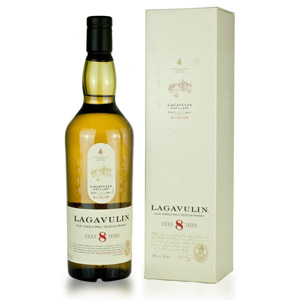Lagavulin (8 year)
We have here an 8 year-old Lagavulin bottled at 48% ABV, and so pale that it’s almost clear. This was originally released as the distillery’s 200th (bicentenary) anniversary limited edition, but has since been added to the core range. With that, the information available online dries up. To my palate, this seems to be missing the sherry portion found in the 16-year. Like the 12-year, I would guess this is entirely from ex-bourbon casks.










